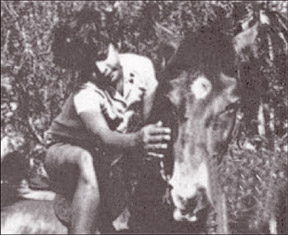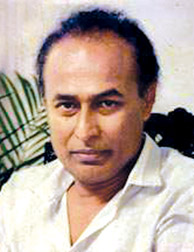
Commonwealth for a Common Future
Nalaka Gunawardene and Vindana Ariyawansa
 The Commonwealth of Nations, widely known as the ‘Commonwealth’ and
formerly called the British Commonwealth, is an inter-governmental
organisation of 54 independent member states of which Sri Lanka is one. The Commonwealth of Nations, widely known as the ‘Commonwealth’ and
formerly called the British Commonwealth, is an inter-governmental
organisation of 54 independent member states of which Sri Lanka is one.
The member states cooperate within a framework of common values and
goals as outlined 40 years ago. These include the promotion of
democracy, human rights, good governance, the rule of law, individual
liberty, egalitarianism, free trade, multilateralism and world peace.
The Commonwealth is an inter-governmental organisation through which
countries with diverse social, political and economic backgrounds are
regarded as equal in status.
Every two years, Commonwealth leaders meet at the Commonwealth Heads
of Government Meeting (CHOGM) to discuss global and Commonwealth issues
and to agree on collective policies and initiatives. The next CHOCG will
be held in Perth, Western Australia, from October 28 to 30, 2011.
Today’s Wiz Quiz starts off with a few questions on this topic.
 1. Australia last hosted a Commonwealth Heads of Government Meeting (CHOGM)
in March 2002, when it was conducted by then Prime Minister John Howard.
It was originally scheduled to have been hosted in Brisbane in October
2001, but was postponed because of the September 11 terrorist attacks in
the United States. Eventually, where in Australia was the meeting held,
where 51 (out of 54) Commonwealth member countries were represented, 35
of them by heads of state or government? 1. Australia last hosted a Commonwealth Heads of Government Meeting (CHOGM)
in March 2002, when it was conducted by then Prime Minister John Howard.
It was originally scheduled to have been hosted in Brisbane in October
2001, but was postponed because of the September 11 terrorist attacks in
the United States. Eventually, where in Australia was the meeting held,
where 51 (out of 54) Commonwealth member countries were represented, 35
of them by heads of state or government?
2. Every two years, Commonwealth leaders meet in a member country to
discuss global and Commonwealth issues, and to agree on collective
policies and initiatives. There has been a meeting of Commonwealth
leaders since 1949. In which year was the current name, ‘Commonwealth
Heads of Government Meeting’ (CHOGM) adopted to describe this gathering
of Presidents and Prime Ministers?
3. To be a member of the Commonwealth, a state must have a direct
constitutional link to an existing member state which in most cases
means having been a former British colony. But some have links to other
countries, either exclusively or more directly (e.g. Samoa to New
Zealand, Papua New Guinea to Australia, and Namibia to South Africa).
The first member state to be admitted without having any constitutional
link to the British Empire or a Commonwealth member was a former
Portuguese colony. What is this state, admitted in 1995 following its
first democratic elections?
4. German dramatist and poet Bertolt Brecht (1898 - 1956) wrote the
play Mother Courage and Her Children in 1939 with significant
contributions from actress and writer Margarete Steffin. Some critics
consider Mother Courage to be the greatest play of the 20th century, and
perhaps also the greatest anti-war play of all time. It is one of nine
plays that Brecht wrote in an attempt to counter the rise of Fascism and
Nazism in his homeland. What specific historical event triggered the
writing of Mother Courage?
 5. The Nobel Prize for Literature 2011 was awarded to a European poet
named Tomas Tranströmer. The citation said the award was “because,
through his condensed, translucent images, he gives us fresh access to
reality”. What country is he a national of? 5. The Nobel Prize for Literature 2011 was awarded to a European poet
named Tomas Tranströmer. The citation said the award was “because,
through his condensed, translucent images, he gives us fresh access to
reality”. What country is he a national of?
6. ‘Evita’ is a musical with music by Andrew Lloyd Webber and lyrics
by Tim Rice. It was first staged in London’s West End in 1978, and on
Broadway in New York the following year. In 1996, film of the musical
was made starring Madonna and Antonio Banderas. The story of Evita is
based on the life of a former first lady of Argentina and herself a
leading political activist who lived from 1919 to 1952 and left deep
impressions in both the culture and society of her country. Who is she?
7. The Torino Scale is used for categorizing the impact hazard
associated with near-Earth objects (NEOs) such as asteroids and comets.
It uses a scale from 0 to 10. A zero indicates an object has a
negligibly small chance of colliding with the Earth, or is too small to
penetrate the Earth’s atmosphere intact. A 10 indicates that a collision
is certain, and the impacting object is large enough to cause a global
disaster. The Torino Scale is a tool for astronomers and the public to
assess the seriousness of collision predictions, by combining
probability statistics and known kinetic damage potentials into a single
threat value. Name the professor of Planetary Sciences at the
Massachusetts Institute of Technology (MIT) in the US who first proposed
this scale in 1995.
8. The Chilean poet, diplomat and politician Ricardo Neftali Reyes
Basoalto (1904 - 1973), better known as Pablo Neruda, was once based in
Ceylon as the Chilean consul. At that time, he admired a leading
Ceylonese photographer, pianist, art critic and cinematographer, saying
this person “was the central figure of a cultural life torn between the
death rattles
 of the Empire and a human appraisal of the untapped values
of Ceylon.” Whom did Neruda praise with these words? of the Empire and a human appraisal of the untapped values
of Ceylon.” Whom did Neruda praise with these words?
9. The capital of United States of America Washington D.C. is named
after the first President of that country, George Washington. What is
the only other capital city in the world that has been named after a US
President?
10. Tech maverick Steve Jobs, who was given up for adoption by his
biological parents, later discovered that he had a younger sister by the
same parents. She became an accomplished novelist. Jobs met her for the
first time when he was 27, and they later became close. She used the
theme of missing fathers for her critically acclaimed novels “Anywhere
But Here” and “The Lost Father.” She also wrote a novel inspired by her
famous brother, titled “A Regular Guy,” which was about an emotionally
disconnected, fruit-loving Silicon Valley biotech entrepreneur named Tom
Owens, “a guy in jeans, barefoot in the boardroom.” Who is this author?
11. Players from New Zealand’s indigenous community, known as the
Maoris, have represented New Zealand rugby team frequently in recent
decades. But New Zealand cricket team did not have a single Maori player
until this wicket keeper from Auckland made his debut for New Zealand in
early 1990s. Name this first Maori player who represented New Zealand in
international cricket (appeared in 78 Test matches and 179 One Day
Internationals).
 12. James J Braddock, known as ‘The Cinderella Man’, scored one of
boxing’s greatest upsets when he defeated then heavyweight champion Max
Bear by decision in June 1935. In his first title defense two years
later, he was knocked-out by the sensational boxer nicknamed the “Brown
Bomber”. Who was he? 12. James J Braddock, known as ‘The Cinderella Man’, scored one of
boxing’s greatest upsets when he defeated then heavyweight champion Max
Bear by decision in June 1935. In his first title defense two years
later, he was knocked-out by the sensational boxer nicknamed the “Brown
Bomber”. Who was he?
13. Titus Thotawatte, who died on October 15,2011 aged 82, was hailed
as the finest editor in the six decades long history of the Lankan
cinema. Having excelled in the craft of making movies in the 1960s and
1970s, he successfully switched to television in the 1980s and 1990s.
There, he again blazed his own trail in Sri Lanka’s nascent television
industry. In all, he edited a total of 25 feature films, nine of which
he also directed. What was the first feature film he edited in 1956,
which is considered a landmark and turning point in the history of
Sinhala cinema?
14. Titus Thotawatte directed 9 Sinhala films between 1965 and 1979.
His debut film as director was about troubled youth encountering the
pressures of city life and villainous characters. It starred Gamini
Fonseka in the villain’s role, along with Anula Karunatillake, and while
being a commercial film, was acclaimed for breaking free from the Indian
mould of action films that heavily influenced Lankan cinema at the time.
What was the film’s title?
15. In the popular consciousness in Sri Lanka, Titus Thotawatte will
be remembered the most for his last feature film ‘Handaya’, which he
both directed and edited and first released in 1979. Ostensibly labelled
as a children’s film, it was intended for everyone “from 8 to 80”.
Handaya swept the local film awards at the Saravaviya and OCIC film
awards for 1979/1980, and also won the Grand Prix at the International
Children and Youth Film Festival in Giffoni, Italy, in 1980. Handaya was
an upbeat story of a group of city children and what kind of animal who
bore that name?
Last week’s answers
1. University of California at Berkeley
2. Ronald (Ron) Wayne
3. Toy Story (original movie)
4. Jane’s Journey
5. Bangladesh
6. Satyanarayan Gangaram Pitroda, popularly known as Sam Pitroda
7. Kamalesh Sharma
8. Arnold Smith (1915 - 1994)
9. Guyana
10. Gehenu Lamai (1978)
11. Laticia Botejue
12. Virginia Woolf (1882 - 1941)
13. The Crow
14. Dr Charles Gabriel Seligmann (1873 - 1940) and Brenda Z Seligmann
15. Lasith Malinga |



